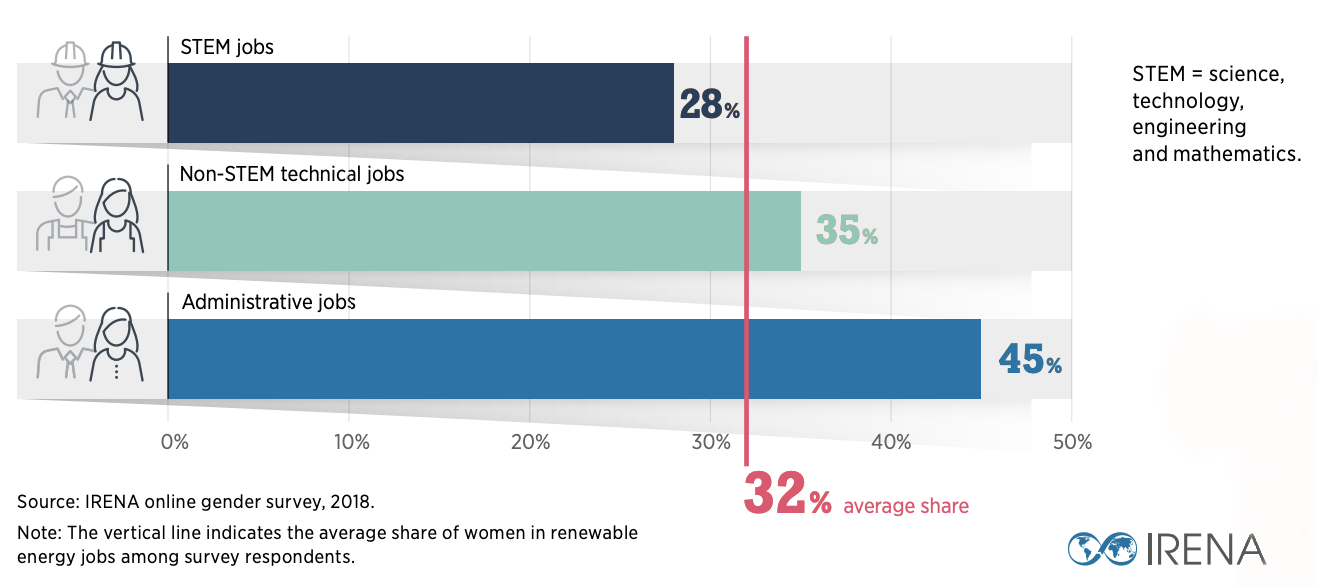Reflecting on International Women’s Day
A few years ago, the International Renewable Energy Agency (IRENA) compiled a report about the relationship between gender and the renewable energy industry. The goal was to explore the female role within the industry now, the challenges that they still face and the potential measures that can bridge the gap. The study found that 32% of renewable energy workforce is female [1]. This was based on a large survey of nearly 1500 respondents across 144 countries. The general breakdown of this portion of the workforce is summarized in the diagram below [1].

This survey highlighted the lack of awareness and slanted perception of the disparity in the workforce. One barrier is the broad male-biased social attitude and perception about gender, such as the assumption that women lack the physical strength for certain technical roles [1]. The general social perception has been shifting in the years since this survey, but the current estimated breakdown is still consistent with IRENA’s findings. The commitment to the UN Sustainability Goal for Gender Equality has opened doors with initiatives to support growth and accessibility for female careers but improvement is slow. To build more equality, there is a need for more female involvement in all levels of the industry, influencing policy [2]. Empowering women will be the key to progress and the predicted growth in the industry job market provides the opportunity to do so.
Nilar is committed to empowering women in the industry from the top down. Our board of directors is 40% female, bringing extensive experience to the table. Within the company, women represent 29% of the overall workforce. This is segmented into 33% within our blue-collar employees and 27% within the white-collar employees. This is lower than ideal, but we are always striving towards improvement. Currently 18% of our internal leadership roles are occupied by women, with two female leaders established in our most critical positions: the manager of our research department in chemistry and the head of operations. Their respective department breakdowns mirror the importance of female leadership; women represent 60% of the chemistry group and 33% of operations. We are proud of the collaborative spirit and extraordinary achievements that our female colleagues bring to our business.
At Nilar, we work hard in creating a workplace with the right prerequisites that are fit for all people. For any newly hired employee, Nilar offers training to equalize the competencies amongst the department. There are ongoing efforts to establish different developmental pathways for internal growth and specialization. Through our relationships with nearby academic facilities, we are able to explore different educational initiatives, which has opened up higher education possibilities to our employees. Nilar values strengthening the knowledgebase of the company and our collaborative environment is only enhanced by our employees’ willingness to learn and explore.
